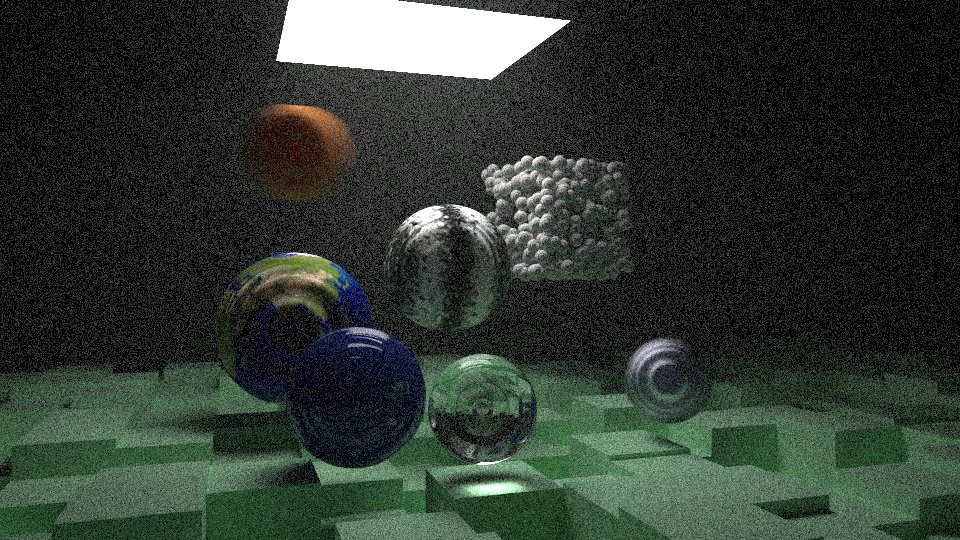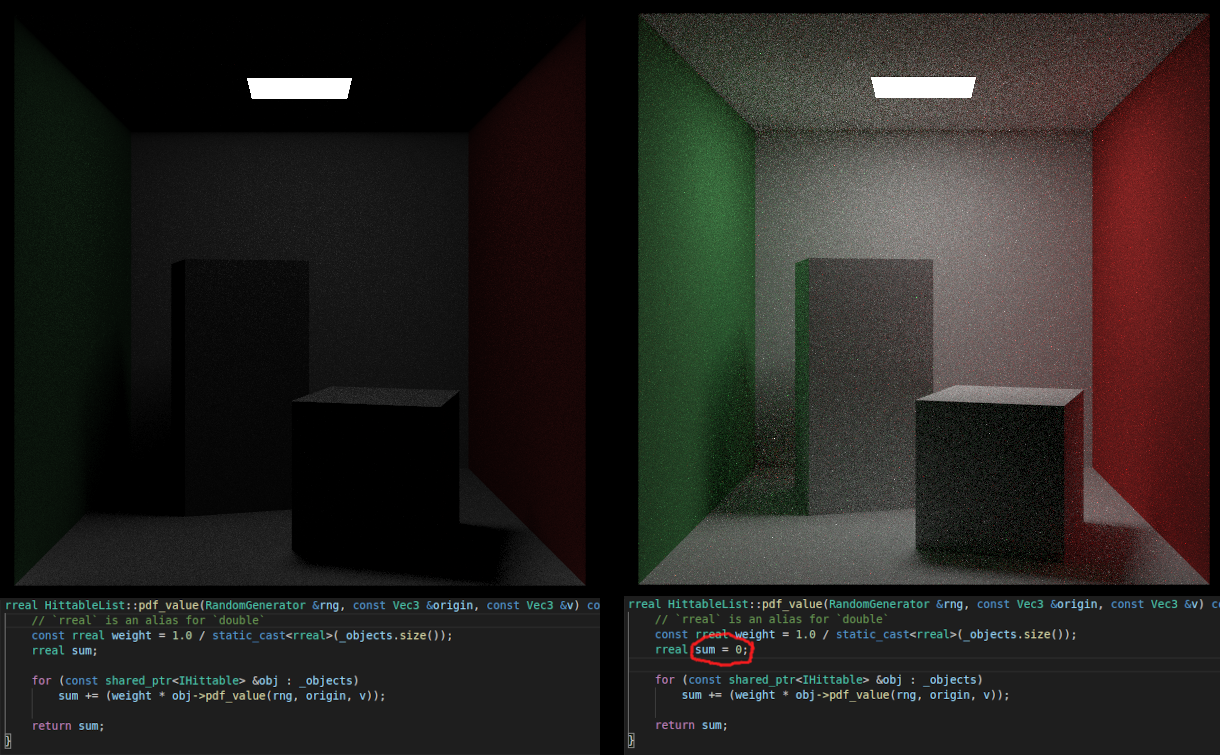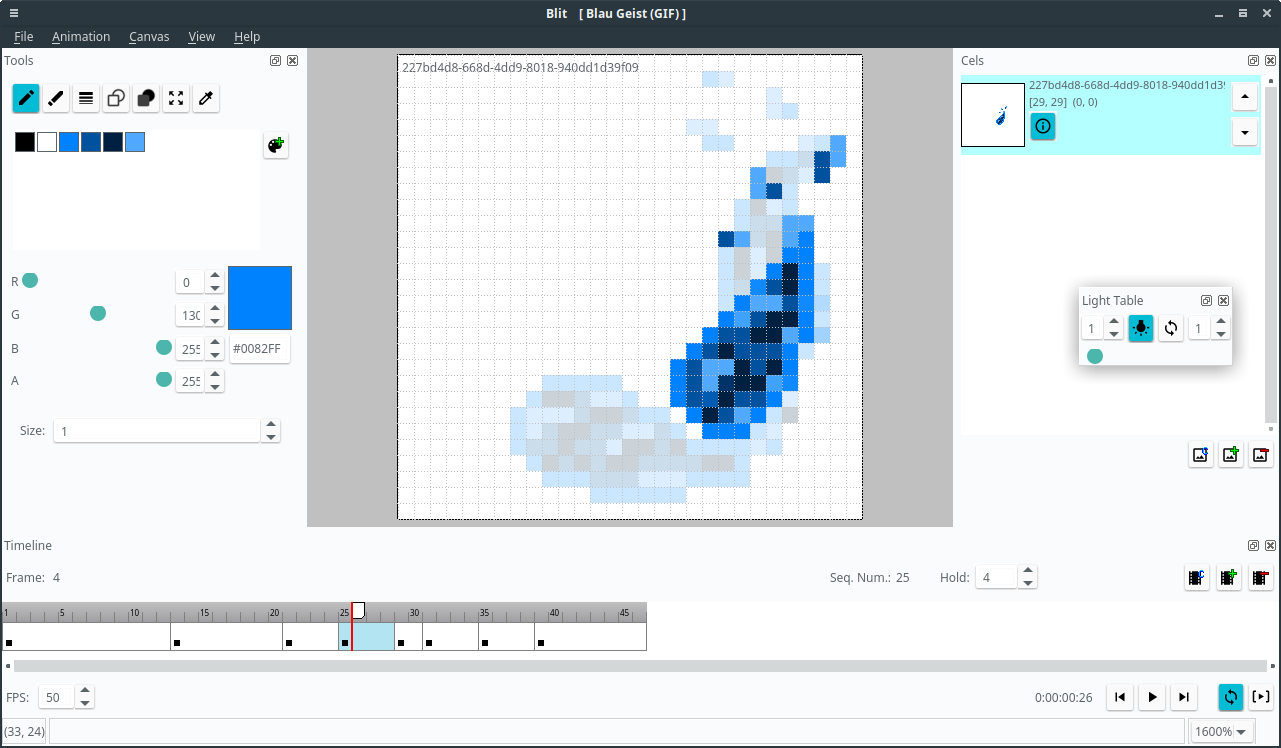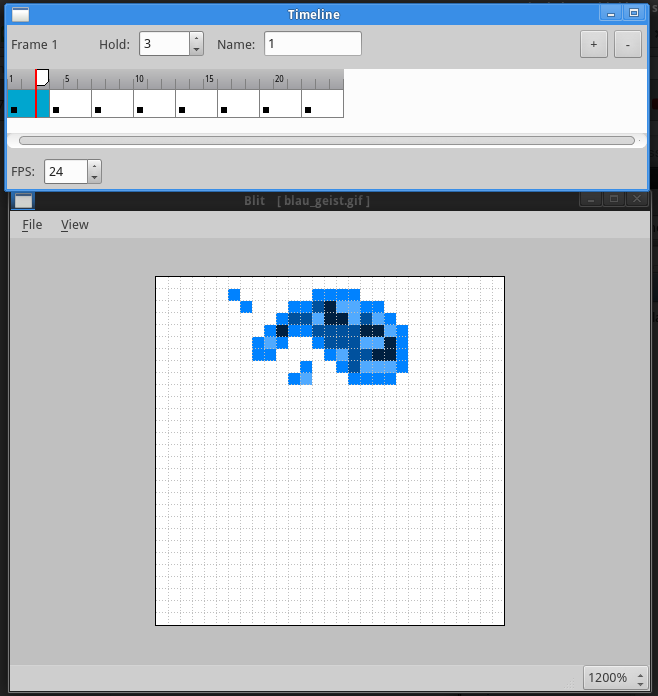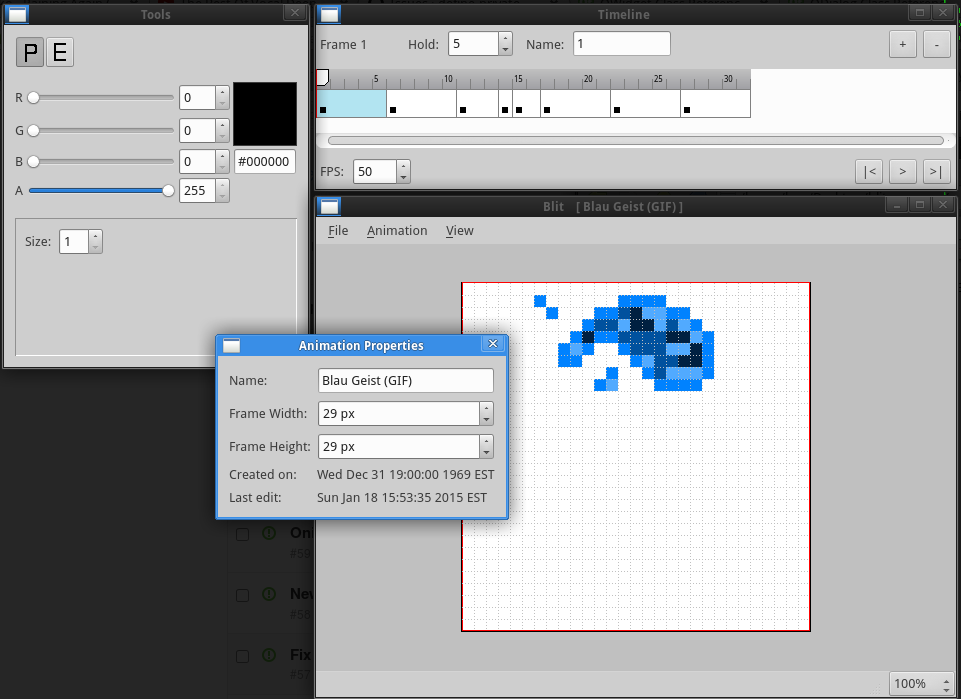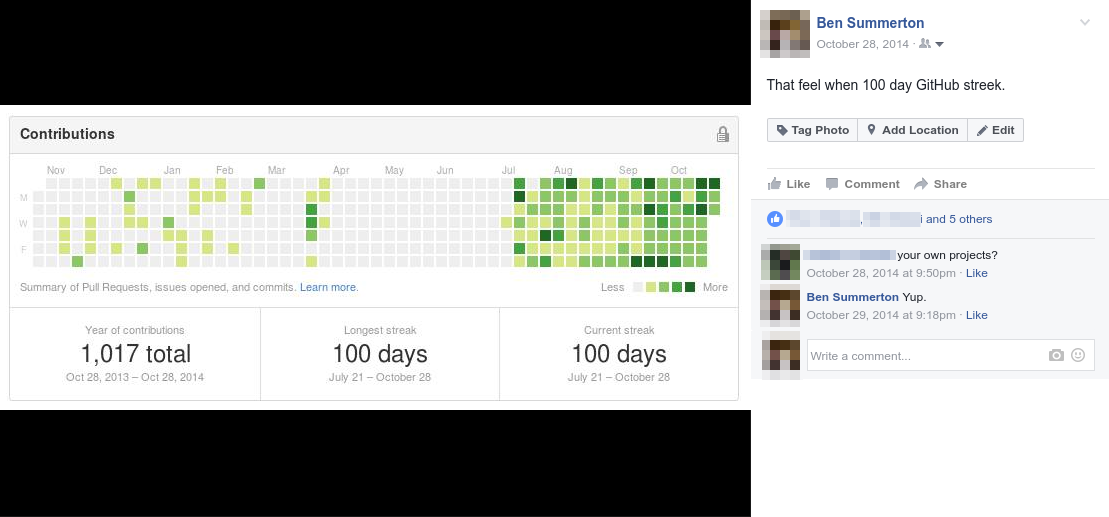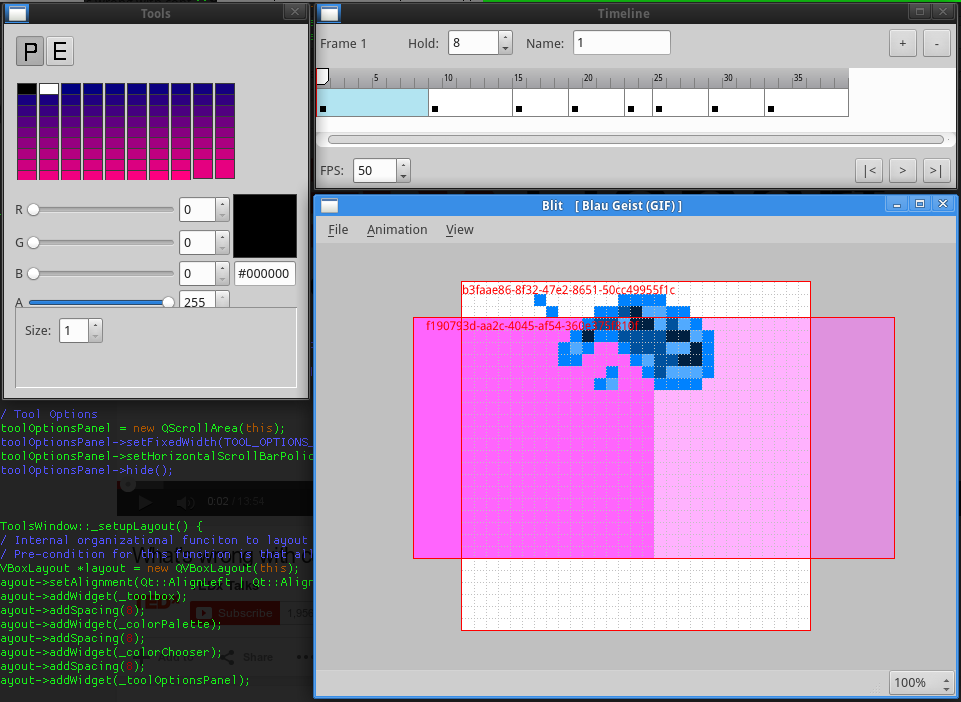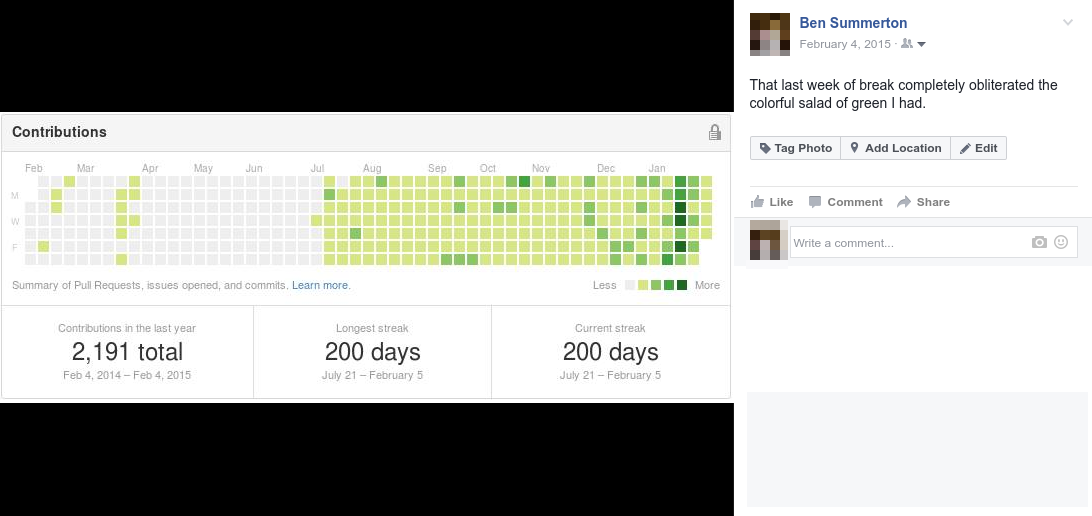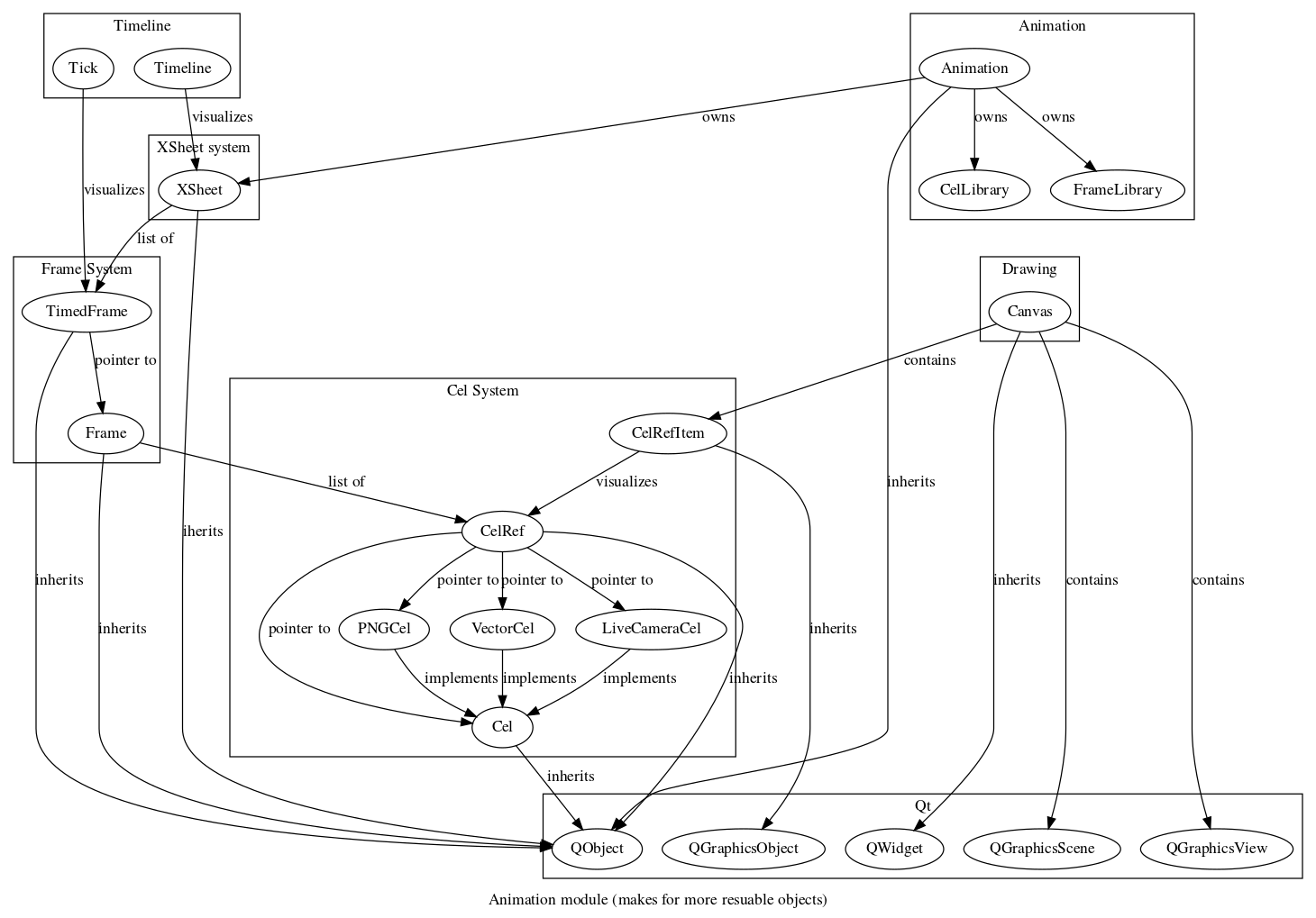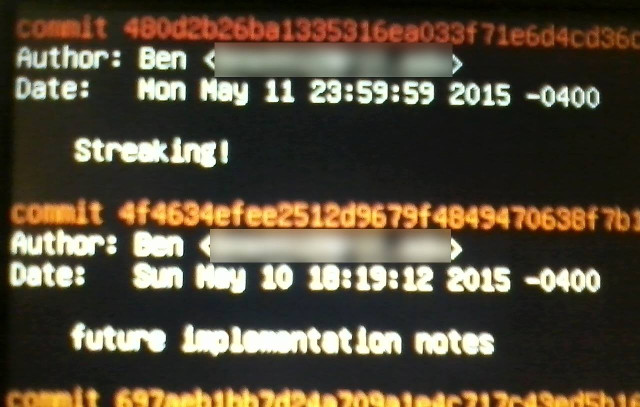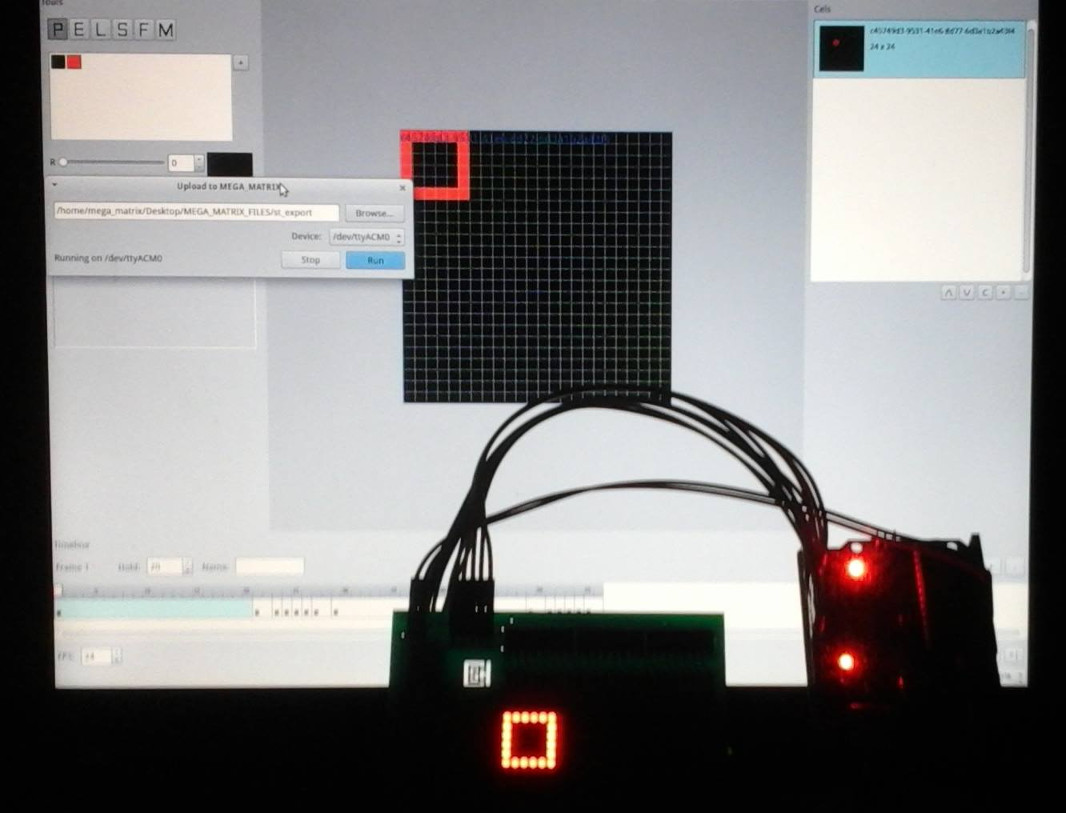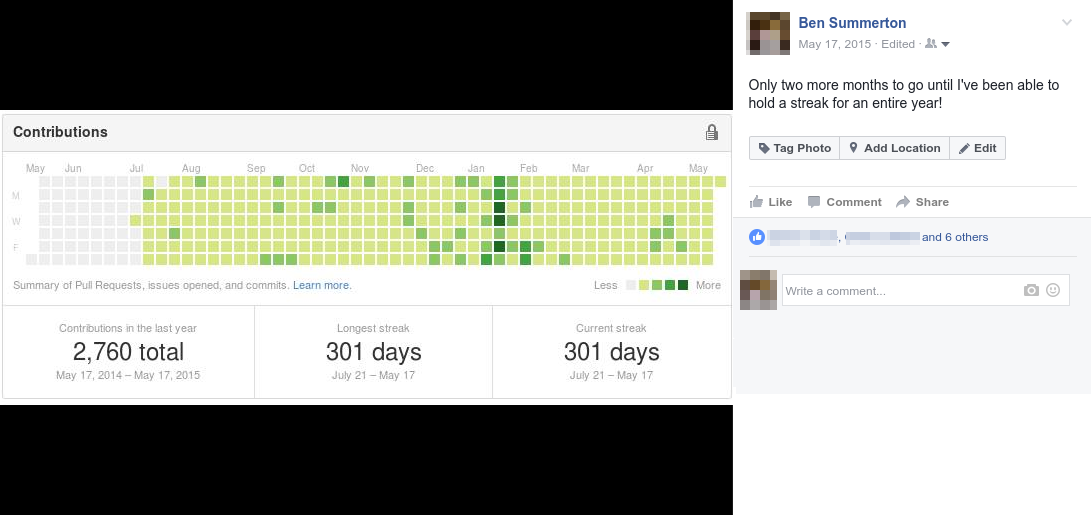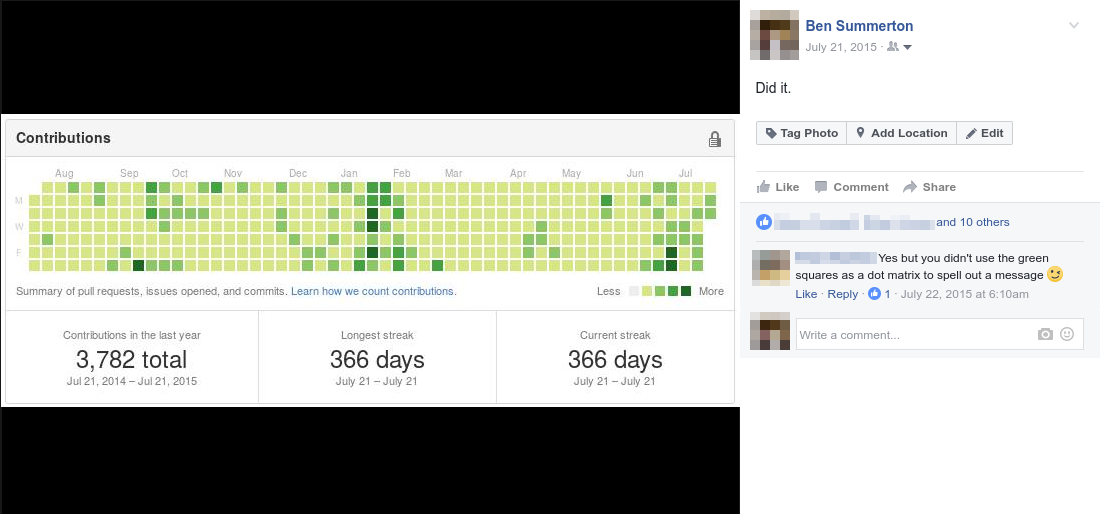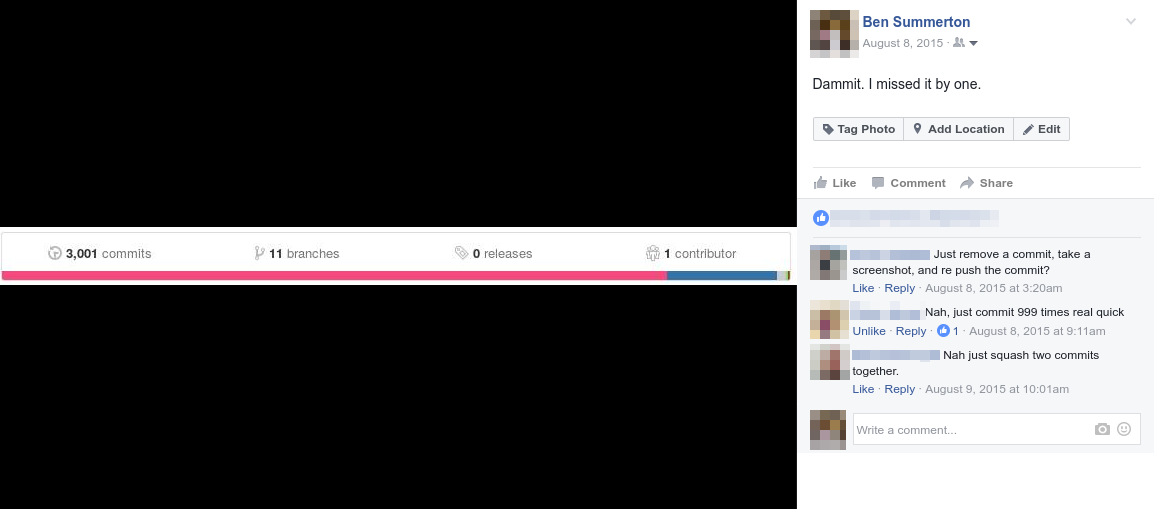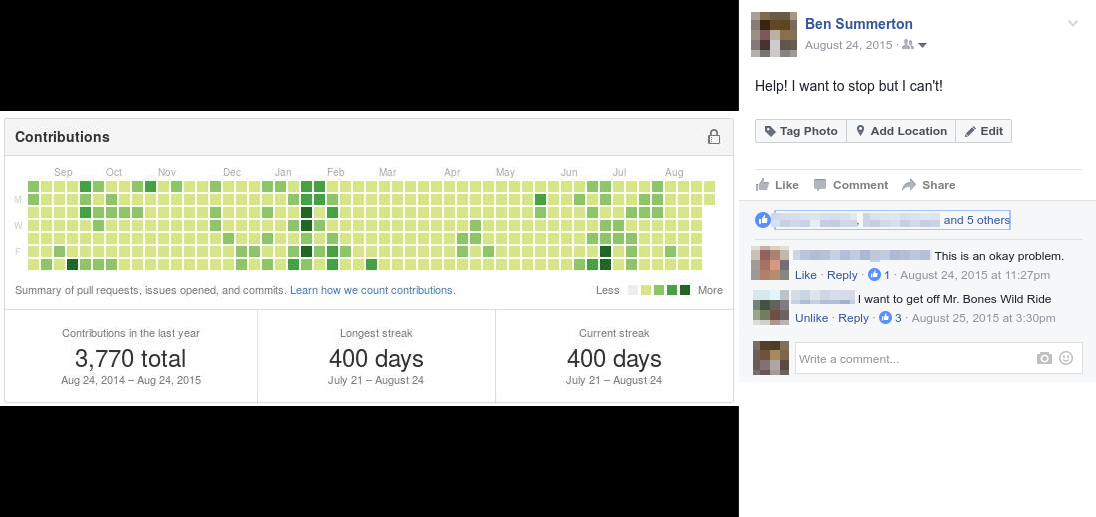Update Feb. 21st, 2022: I recently added a Qt/QML based UI for PSRayTracing. It runs on Windows, Mac, Linux, Android, and iOS! Though if you have an Android device handy, you can grab it off of the Google Play store. Here's also a follow up blog post detailing the process.

Update Oct. 23rd, 2023: It's now on on the Apple App Store too now if you want it:
Note: If you want to look at this project's code, as well as the REAMDE which details the optimizations, you can find that here. This blog post moreso covers the process that I went through while working on this project. You could think of this as a post-mortem report, but I view it also as a guide for how to get more out of your CPU from your C++ program.
Extra thanks to Mr. Shriley for giving this post a proof read.
Right when I was fresh out of college, I was in the depth of my "Nim binge". I was looking to try a second attempt at writing a ray tracer after my so-so attempt back in a Global Illumination class. After a quick search on Amazon for "ray tracing" I found the Peter Shirley "Ray Tracing in one Weekend", "... The Next Week", and "... The Rest of your Life" mini books. At $3 a pop I thought it was a fair thing to take a look at. As an exercise to better learn the Nim language, I went through these books but used Nim instead of C++. Looking back at my first review of the book series, I feel as if I sounded a little harsh, but I really did have a pleasant time. I had some high hopes that my Nim version was going to perform faster than the book's code though it didn't. In fact, book no. 2 was much more woefully slow than the reference C++.
Now throughout the past 4-ish years, I've been seeing pictures from this book pop up here and there. Especially book 1's final scene. These books are now free to read online. I kind of now know what it feels like to purchase a game at release, only to see it go free-to-play a short while later. I think it's good that this introductory resource is now available to all. The HTML format is much better than the Kindle eBook in my opinion.
With the popularity of ray tracing exploding recently (thanks to hardware acceleration) I've only run across this book even more! A few months back I was itching to start a CG project. So I thought to myself "Why don't I revisit those ray tracing books, but this time do it in C++ 17. And try to optimize it as much as possible? Let's see if I can beat the book this time!" I chose this because I have been a little lax on learning the new(ish) C++17 features. I also wanted to see how far I could push a CPU bound renderer.
Here were some goals & restraints:
- Write modern, clean, standard C++ 17 code
- Needs to compile on Windows, Mac & Linux, under GCC & Clang
- Should be as vanilla as possible
- Two exceptions are single-header/static libraries (e.g PCG32), and one Boost library. Single header libs typically are pure C++ themselves and Boost is a defacto standard library for C++ anyways
- Give the code a nice, cleaner project architecture
- The books' original project structure is kinda messy to be honest
- I still have the keep the general architecture of the ray tracing operations itself, but I'm free to rename and re-organize things as I see fit
- Have it perform better than the books' implementation
- But add compilation (or runtime flags) to compare the book's methods with my own
- Add some extra features to the ray tracer
- Be able to reproduce every scene in the book, and deterministically
- Mutli-threading provided by
std::thread - I wasn't allowed to add any new rendering techniques that were beyond the scope of the book. E.g. No adaptive sampling. Threading is allowed since I can turn it off, as to compare the performance of my code vs. the books'. It's not really fair to compare Adaptive sampling vs. No adaptive sampling.
Books 1 & 2: Ray Tracing in One Weekend, and The Next Week
Revision 1
Setting out, it was pretty simple what I would do here. Read a section of the book, copy over the code, see if it worked, then continue on if so. While going through each section I would try to consider if there was a more performant way that the code could be written. Sometimes this would involve simply reordering lines of code, so that the compiler could do auto-vectorization. Other times, I would ponder if there was a more efficient algorithm.
A simple to follow example here would be the alternative *Rect::hit() methods (take XYRect::hit() for reference, the Book's code has this structure:
- Do Math (part A)
- Branch if A's math is bad (by doing math to check if so)
- Do more math (part B)
- Branch if B's math is bad
- Do even more math (part C)
- Store results (part C) in variables
If you want to speed up your program, one of the best ways to do this is reducing the number of branches. Try to put similar sections together. My code has the following structure for the hit() method:
- Do Math (parts A, B, & C together)
- Branch if math is bad (either A or B)
- Store the computed math (from C) if it's good
Compilers are pretty good at recognizing parts of your code that could benefit from auto vectorization. But putting all of the math operations together in one section gives the compiler better hints on how to solve these tasks much more efficiently. Reducing the possibilities of branches also helps as well.
Another great example of this comes from the AABB::hit(). The books' solution is chock-full with branches. The method I used (not 100% my own creation) eliminates the vast majority of the branching and keeps similar computations close together so that auto-vectorization can be achieved.
If you think you have something that's faster, the best way is to prove it is by measuring. And the best way to test this is by setting up a long render (e.g. 5 minutes). Don't forget to run it a few times, in order to make sure the renders complete within the same general time frame (with five minutes, it's okay to be off by a second or two). After that, you swap your changes and see if it shaves off a significant portion; which must be consistent through multiple runs.
Sometimes performance boosts from these ways could be quite significant (e.g. 8-15%), other times, they could be really-really tiny (e.g. 1-2%). For example, if you shave 10 seconds off of a 5 minute render time, that's only 3%. It can be a little difficult to conclude if a change truly saves on rendering time. So then that usually involves doing renders that would normally take upwards of 30 minutes, only to see if you still get that 3% render time improvement. You need to make sure that your computer is not running any other processes at the same time too.
And another important method of testing is to also verify any code changes on different hardware too. For example, sometimes on a Gen 7 Intel chip I would get a 30% speedup! But then on Gen 9 it was only 10% (still good). Then on a Gen 10 would maybe give me only mere 2%; I'd still take that.
I had a few optimizations that were in the ~1% area. These are the hardest to prove if there was any actual change on the rendering performance or not. This is where things start to get into the microbenching realm. It gets much more difficult to measure accurately. Environmental conditions can even start to affect measurements. I'm not talking about what operating system you're running on, but the actual temperature of your hardware. This page gives good detail on the relationship between heat and speed. Another way to test any micro optimizations is by taking the 1% changes and trying them out together. See if the sum of their parts makes a significant boost.
While running after all of these little improvements, I was reminded of Nicholas Omrod's 2016 CppCon presentation about small string optimizations at Facebook. After a lot of work, they were able to get a custom std::string implementation that was 1% more efficient. For them, that can be a very big deal. Though to your average company, that might not be so enthralling to spend time on. I can't remember the exact words, but some other wisdom was given in that talk: "For every small change we make, it adds up; and eventually, we make a big leap."
A very important tool that I cannot forget to mention is Matt Godbolt's Compiler Explorer. Those of you in C++ circles have definitely seen this before. For those of you outside of them, this tool lets you look at the generated assembly code for any given C/C++ snippet. With this, you can see if any C++ code rewriting/reordering would generate more efficient CPU code. The compiler explorer can also help you search for micro optimizations. Which as stated before, can be a little hard to measure with purely time lapping alone. I used the compiler explorer to see if there was a way to rewrite code that would reduce branching, use vectorized instructions or even reduce the amount of generated assembly.
I do want to note that in general reducing the amount of instructions a program has to run through doesn't always mean that it will run faster. For example, take a loop that has 100 iterations. If it were to be unrolled by the compiler, it would generate more assembly in the final executable. That unrolled loop will run faster since the loop no longer needs to check 100 times if the iteration is done. This is why we always measure our code changes!
One of the other key problems here was ensuring that my renders were always deterministic. Meaning, given the same inputs (resolution, samples-per-pixel, scene setup, etc.), the output render should be exactly the same. If I re-rendered with more or less cores, it should be the same as well.
The RNG controls where a Ray is shot. When the ray hits an object it could be bounced into millions of directions. Maybe 1/2 those possibilities will send the ray into the sky (where next to no objects are), and the other half could send it into a hall of mirrors filled with diamonds (an unlimited no. of bounces). A small tweak in the RNG could bias it (ever so slightly) into one of those areas more than the other. And if the hall of mirrors scene was set up by another RNG, any changes to that will also change the scene quite a bit, thus also changing the render time.
For example, the final scene of book 2 had three components that rely on the RNG. The floor (a bunch of boxes of varying heights), a "cloud" of spheres, and the BVH node structure. I tested out an optimization for the Box object that required the RNG. Rendering the cornell box example was about 6% faster. But when rendering out the aforementioned final scene it was 15% slower... I noticed that all of the floor boxes and "sphere cloud" were placed differently with the optimization on/off. At first I thought that couldn't be the issue. But when I used two separate RNGs (one for controlling the layout of the scene, the other for the Box optimization). Not only did I get back my original scene layout, I also got that perf boost I saw from the Cornell Box scene.
Let's take two different renders of that final scene, but for the first image, I set the RNG to be "ASDF" and for the second it's "0123456789". These were rendered a few times over (to get a good average). The above rendered in an average of 973.0 seconds. The lower took an average of 1021.1 seconds. While that not seem like much, changing the RNG's seed made it render 5% slower!
I tried to make it when toggling on/off my optimizations, the resulting images would be the same. But there are some cases in which this ideal was bent a little. To be more specific, I'm talking about the trig approximations. If you're making a flight control system or a spacecraft, you want to be damn sure that all of your mathematical formulas are correct; but when it comes to graphics, we can fudge things if they fool the user. A.k.a the "eh... looks good enough" guideline.
Another good example here is that of the approximations for asin() and atan2(). For texturing spheres, the difference is barely noticeable, but the speed boost was impactful. It's very unlikely that without a comparison that flips between the two images quickly, no one would notice the difference! Though if we were to have a much higher detailed texture, and be zoomed in much closer to any of the trouble points (e.g having only the UK & Ireland in view), it's more likely a viewer might see something odd.
While the approximation optimization doesn't produce the exact same image. I guarantee you if you showed one of these renders to a person for a minute, told them to look away, then showed them the other, they would tell you it's the exact same picture. If you can get a faster render and don't need it to be mathematically accurate, approximations are great!
Not all attempts at trying to squeeze more performance were successful. I'm sure a lot of us have heard about the famous fast inverse square root trick that was used in Quake. I was wondering if there was something similar for computing the non-inverse version, std::sqrt(). The best resource that I found on the subject was this. After exhausting all of the methods presented, they either produced a bad image, or were actually slower than std::sqrt().
Revision 1 (or as it's tagged in the repo, r1) was where most of the work was done in this project. There were other possibilities I wanted to explore, but didn't have the time initially, so I delegated these to later releases. They aren't as grand as this initial one, but each of them has their own notes of significance.
Revision 2
While I was initially working on the Box object, I couldn't help but think that using six rectangles objects stored in a HittableList wasn't the most efficient way of rendering such an object. My initial optimization was to use a BVHNode instead (which also required an RNG). While that led to a reduction in rendering time, I felt that this could be pushed further. Looking at the hit() functions for each constituent rectangle, It seemed they could be put together in one grander function. This would have some benefits:
- Reduced memory overhead of creating seven extra objects. Which also means less memory traversing (or pointer chasing)
- Don't need to traverse a list (or tree) to find out what hit
- The code to check for hits looks like it could be easily auto-vectorized and have reduced branching
I don't want to bore you with the gory details ( you can see them here). This alternative Box::hit() function, it's quite SIMD friendly. From some of my measuring, this method was about 40% faster to render than the books' method!
Revision 3
At this point, I was starting to exhaust most of the "under the hood" optimizations that I thought could make an impact. Two more I explored this time around were "Deep Copy Per Thread" and "BVH Tree as a List".
Talking about that first one, this optimization was only available because my implementation allowed for rendering with multiple cores (the books' code does not). The scene to render is stored as a tree structure, filled with shared pointers to other shared pointers to even more shared pointers. This can be very slow if we're only reading data from the tree; which is what happens during the rendering process. My hypothesis was "For each thread I render with, if I make a local copy of the scene tree to that thread, the render will finish faster".
I added an extra method to each object/material/texture called deep_copy(), which would well, produce a deep copy of the object and its children. This was quite a bit of a tedious task. But when, for example, doing a render with 4x cores. Having "copy per thread" turned on, it would render the scene 20-30% faster! I'll admit I'm not 100% sure why this was so beneficial. I posed the question to one of Reddit's C++ communities, but I have yet to be given a satisfactory answer.
"BVH Tree as a List" was more of a complex experiment. While it was slightly more performant, it did not yield the results that I hoped for. The BVHNode class is nothing more than a simple object that may contain either another hittabale object, or two child BVHNodes. These are all stored with shared pointers. I was concerned that (reference counted) pointer chasing and fragmented (dynamic) memory might not be too efficient.
My thought was "If I take all of the AABB's for each node, and store them linearly in an array (i.e. list), but in such a way they can be traversed as a tree, this would allow for faster traversal". The hope was that it would be more memory/cache friendly to check all of the AABBs, rather than testing a chain of BVHNodes. The speedup was quite piddly; I measured about 1-2%. The code is much more convoluted than the standard BVHNode. If you wish to read it, it's here (don't forget to check out the header file too!)
At this point, I thought I had hit a limit on what I could change without breaking the architecture. I was looking to work on the implementation for book 3, but I decided it might be best to take a little break.
Revision 4
As I mentioned before, this mini-book series has exploded in popularity. Reading Peter Shirley's Twitter, I saw him retweeting images of a project called RayRender; a ray tracer for the R programming language that's useful for data-viz. This ray tracing program was actually based off of these mini-books. After that, I subscribed to Tyler Morgan-Wall's Twitter. In part, watching his progress made me interested in revisiting these books.
In a Christmas Eve tweet, he said that he was able to give RayRender a 20% performance boost. My curiosity was piqued and I started to scour through his recent commits.
For the HitRecord class, he simply changed a shared pointer over to being a raw pointer. That was all. HitRecord and its material pointer member are used a lot during the rendering process. It really makes no sense for them to be shared pointers at all. This little change netted me a 10% - 30% perf. boost! This one I'm a little upset about not realizing myself.
Book 3: Ray Tracing the Rest of Your Life
Before working on r2 I tried to make an attempt at book 3. But while working through its initial chapters, I soon realized it was impossible to make sure I could render any older scenes. This was because the core logic of the main rendering function was changing quite a bit from chapter to chapter.
But in the interest of completeness (and that I exhausted all other possible optimizations I could think of), I set out to finish the series. It's in a separate branch called book3. It can't render any of the older scenes from books 1 & 2.
Revision 5
There is nothing special about this revision. It's nothing more than book 3 alone. It only supports four scenes; the Cornell Box box with various configurations.
While I was working on it, I did encounter a "fun" rendering bug that was an absolute pain to figure out. I forgot to set an initial value for a variable. Take this as a good lesson on why you should always assign an initial value to anything.
Revision 6
While going through Book 3, I couldn't help but notice that during the rendering stage, we allocate dynamic memory and pass it around with shared pointers; this is an absolute speed killer. This was being done for the PDFs. Taking a stern look at the code, it looked like the PDFs could be allocated as stack memory instead.
Part of the issue is that inside some of the objects' hit() functions, it could generate a PDF subclass of any time. But then that function had to return the PDF as a pointer to a base class. Then later on, the PDF would be evaluated with virtual functions; value() and generate().
So I thought "Wouldn't it be possible to pass around PDFs using a variant?" One of the rules for variants is that they must be allocated on the stack. This solves the issue of dynamic memory (and usage of shared pointers). Then when we need to evaluate the PDF, the variant can tell us exactly which specific PDF to use, and thus the appropriate value() and generate(). Therefore, PDFVariant was born. Any of the existing PDF subclasses can be put into it.
The code for this is on another separate branch called book3.PDF_pointer_alternative. This also breaks the architecture a little. MixturePDF was a little bit of an issue since it originally required two shared pointers to PDFs. Replacing PDFVariant for those pointers doesn't not work, so I needed to use raw pointers to PDFs instead.
Final Thoughts
It was a really great experience to re-explore this book series, as well as Ray Tracing. There are other optimizations I think that could push the performance much further, but these all would require breaking architecture more than I already have. Just some ideas:
- Remove all uses of shared pointers and use raw ones instead
- Incorporate libraries like Halide so some parts could be run on the GPU (breaks my "CPU-only" rule though)
- Incorporate other sampling methods; e.g. blue-noise or sobol
- See if rendering could be performed "breath first" instead of "depth first"
When I first went through the book series four years ago, there were bits of errata here and there. I made sure to email Mr. Shirley whatever I found. I think all of them have been cleaned up. But since this book series is now freely available online and a community project, some more have been introduced; I recall finding more in book 3 than others.
There are some other things I find a little unsatisfactory too:
- Having to throw away all of the other scenes from books 1 & 2 to do book 3. It would be fun to revisit those former scenes with PDF based rendering
- Rotations are only done along the Y axis, and there is no way to change the point an object is rotated about. Though, anyone who wants to add this for the X & Z axis should be able to easily do so. Maybe in a future revision of this book having the rotation method use quaternions instead
- The Motion Blur effect feels wrong. Only spheres can be motion blurred. And for the feature, we had to give Rays a sense of time
But keep in mind the ray tracer that is built more on the educational side rather than being more "real world application" focused. It serves the purpose of teaching well. I still recommend that anyone who is interested in computer graphics give this book a read through.
There are other parts of CG programming I want to explore; I think it's a good time to move on.
Before I begin, you can find the source for Blit over here.
I want to talk a little bit about a project I worked on every day from July 2014 till the end of August 2015. You may have seen a few entries about it back on earlier posts; that project was something I called “Blit.” If you’re wondering what Blit was, it was my attempt at trying to make an Animation focused art program. It was pretty ambitious for someone like me at the time.
There were two main reasons why I started to work on it:
- Back when I was an undergraduate, I was part of a student group were we had to do these things called “major projects,” each year if we wanted to retain membership. They usually are of a technical nature (programming & engineering). This is where my initial drive came from
- I’ve never worked on a “large,” or “longterm,” project before. Everything else I’ve done up till that point were small things like class assignments, course projects, or tasks for my internships. I had friends who had worked on their own projects for two or three years straight and made some really cool stuff. I really wanted to be able to tell others (mainly prospective employers) “Yeah, I’ve been working on this thing for over year. Want to take a look?” Other than just “having something,” I also wanted to learn how to manage a larger and lengthier project.
The “major project,” was something that was pretty easy to fulfill. But for the second I did something kind of stupid, but worked well for me. I told myself “Alright, I’m going to work on a project that will have a 365 day long GitHub streak.” In reality, git streaks are a silly thing to track progress. I was working on Blit in a private repo, so the outside world would not see my streak at all. I feel bad for the people who have the need to maintain one. For me it was a reminder to build on Blit each day. It worked.
Whether it be programming, logging issues, source code cleanup, design & planing, writing documentation, etc., I had to minimum goal of one meaningful commit per day. Normally I would spend an hour on Blit per day (more on the weekends). I would keep at it until the kitchen timer to my side beeped. Somehow that little thing was able to keep me focused for a straight hour.
So What Is (or Was) Blit?
I’ve always been someone who’s liked art and programming. Especially combining the two. One of my favorite genres is pixel art, or sprites as they are also known. I’ve dabbled in making a few other art programs before, but nothing like this.
Originally Blit supposed to be only a sprite animation tool that had a modern look and feel, but my ideas for it grew greater (*sigh* feature creep). There are many other sprinting tools out there like GrafX2, Aseprite, (and other 2D animation programs like TVPaint). I’m not saying that it’s wrong that they make their own GUI toolkit, but it feels kind of odd. I really wanted to bring these types of programs out of the days of the Amiga. After doing some initial research, I settled on using Qt. Here are my reasons:
- It’s cross platform. I work on a Linux system, but I want my Windows and OS X friends to be able to use what I make
- It’s a C++ library; my native tongue. But there exists bindings to other languages, such as Python
- There’s a lot more to Qt than just widgets. It really is a fully featured desktop application framework
- It has a massive community around it and it’s very well documented. So if I ever ran into trouble I’d be able to find some help
Before I move any further, you might be wondering where the name “Blit.” came from. Since it had a focus on 2D graphics, the name came from the “Bit blit,” algorithm. I used to do a lot of programming with libSDL, so the function SDL_BlitSurface() has been burned into my brain. I thought it would be a cute name too.
I also wanted to keep more of a “traditional animation,” approach to Blit. Instead of drawing on images there were “Cels.” Layers were called “Planes.” Instead of a Dope Sheets I had “Exposure Sheets.” I didn’t call it “onion skinning,” but “turning on the Light Table.”
Starting Out
As mentioned before, I was focused on sprite animation (originally). I wanted to keep things as easy as possible. While I did consider using Qt’s native C++ libraries, I decided on making the program in Python with PyQt. Scripting languages are typically much faster to write code for. I felt as if I would be able to get more done in less time. I didn’t think that there would be too many computationally intensive procedures to worry about. In the event that I needed some performance boost, I could always write a C/C++ extension for Python.
After choosing my tools, the first thing I did was draft some design documents. These included a user interface mockup and an initial file format structure. I started to log tickets on the GitHub issue tracker. I had an miniature road map to start from. Within a month and a half, I was able to load up one of my files into Blit, do a little simple Cel & Frame editing, and then save it. You couldn’t do too much with it, but I thought it was a good starting point.
During my initial research of Qt, I discovered something called the “Graphics View Framework.” There were a lot of widgets that I had to custom make such as the Timeline or the Canvas; it made my life much easier. It really is one of the nice features of Qt. If you’re making a heavily graphical application you should take a look into it.
Despite being able to get a basic animation loaded, edited and played back, I was starting to run into some issues with the development language: Python. I had issues with things like circular imports and nested imports (python files imported from many directories deep). I don’t want to go into the details of how they were affecting me and the project, but all I can say is that they were driving me up the wall. So I devised a solution: Switch to C++.
Now, switching development languages is not always something that’s advised. But at the point where I was, it was feasible to do and would possibly have a better impact on my project. Nested imports are a non-issue in C++ and the circular imports are fixed with simple include guards. On top of that, I wouldn’t have to use PyQt’s bindings anymore and Python would not be a performance bottleneck since it would be gone. Working at my usual hour a day pace, it took somewhere between two and three weeks to port everything I had to C++. I wasn’t happy about losing that time to work on new features, but I think it was a better choice in the end.
I didn’t entirely ditch Python & PyQt. If I needed to prototype a widget, I would use those tools. It helped to realize ideas pretty quickly, then later I would integrate it into the C++ source.
Feature Creep, “Future Planning,” and Broadening Horizons
In the first couple of months that I was working on Blit, more ideas started to pour into my head of what it could or should be able to do. We all know what this is; Feature Creep. Whenever I though of a cool new thing I wanted to add, I usually weighed the cost of adding it in within my current milestone, the next, or burring it in the issue tracker. This is where I developed the “Future Planning,” tag. If something popped into my head, almost 95% of the time I would not mark it under any milestone and put it under that tag. It was a good way for me to tell myself “Alright, I think this would be a good thing, but I need to focus on other stuff right now.” This worked actually pretty well for me. At all times, the most populous tag in my issue tracker was the “Future Planning,” one.
Around 100 days into the project, I felt like I had a good direction that I was going in. I was nearing the end of my (second) internship and I would be left with nearly two months before classes would begin again. With all of this free time, I set myself the goal of “Be able to draw a bouncing ball animation and export it as a Spritesheet,” before Christmas hit. I achieved that.
By this time you could move Cels around on the Frames, move the Frames on the Timeline, and adjust their hold values. I think I focused more on the staging of objects rather than editing them. To work on this shortcoming, I decided to start work on a Tool interface. I had the idea that editing tools should be plugins and people should be able to write their own; a very common idea in art applications. Instead of only “put pixel,” and “erase pixel,” I added line/shape drawing, filling, and was working on a soft brush tool.
When I got back to school I fulfilled that first goal of passing it as a “major project,” in my student group. It was well received for what it was at the time, a very simple pixel art animation tool. Though, I started to think more beyond simple spriting. Not only do I consider myself a fan of Animation, but someone who really enjoys making it. I started to ponder “What if Blit could be used for all sorts of 2D animation, not just pixel art?”
I didn’t think it would be too hard to add a camera hookup to the program (something that I’ve done with Qt before), so Blit could be turned into an application to do pencil tests, capture paper drawn animation, or even stop motion. My rule became “If it’s Bitmap based, Blit should be able to do something with it.” I also thought that there wasn’t a good free (both as in beer and speech) software solution to 2D computer animation. TVPaint, Dragonframe, and FlipBook were used a lot in the animation department. I can understand the expensive cost of them for professionals and that it’s niche software, but it really sucks for students who want to learn how to animate, but already were paying a small fortune for their college tuition.
To make Blit more generic, it had to undergo something I called dubbed “The Grand Refactoring.” The whole animation module was like this: an Animation owns an XSheet, which owns a list of Frames, where each Frame owns a list of Cels. No reuse. This was good to get started with, but pretty bad since in the real world animation is reused all of the damn time. So I devised up this system instead:
As it would force me to fix up almost every single thing in the program that touched the Animation module (including the file format), I set this to be its own “half milestone.” It took about a month and a half to complete. It really sucked not being to add any new features for that time; only endless refactoring. At the end of that, all the logic was in the code to be able stage the same Cel across multiple Frames, or instance a Frame multiple times in the Timeline. Though, because I was focused on fixing things up, I didn’t add in an interface where the user could actually reuse Cels and Frames. If they wanted to, they would have to edit the sequence.xml file. So it was there, it worked, but wasn’t usable by the layman.
While taking classes and juggling other (smaller) projects it sometimes became difficult to make meaningful contributions to Blit. I tried to stick to my “one hour a day rule,” but that became hard. Also, refactoring isn’t fun. You don’t get to see new features, you’re restructuring stuff that already exist. You might also break things and then have to spend time fixing them. It’s hard to stay motivated when nothing is new or exciting.
My brain was fried after writing code for my class assignments. I found that (better) documenting the source code, reviewing issue tracker tickets, and revisiting design documents wasn’t too hard. If I recall correctly there was a two week stint were that was all that I did.
Despite all these speed bumps, I got to do something really cool with Blit at the end of the year. If you’ve read some of my older blog posts, you may have seen this thing I made called MEGA_MATRIX. For those of you who don’t know what it was, it is a 24x24 LED Dot Matrix display. I actually developed it in tandem with Blit during the early days of the application. Anyways, at the end of the year my college hosts what is essentially a campus wide show and tell day. I thought it would be neat If I could let people doodle animations in Blit, then upload them onto MEGA_MATRIX. Turns out it was. I made a special fork of Blit called “The MEGA_MATRIX Edition,” where I only let users draw in two colors (red and black), preview their animations, and then upload them to an Arduino to drive the display. One of my friends said it was his favorite thing at the festival because “[I] practically made a hardware implementation of Mario Paint.”
Altered Scope, One Full Year, and the End of Development
At the beginning of 2015’s summer, I was off to my next internship. During the day I would write C# code for a rendering infrastructure. After work I would exercise, watch some TV, play a few video games, but also work on Blit, for well, at least an hour a day.
After “The Grand Refactoring,” and the MEGA_MATRIX Edition I was able to get a few more features out of the way. Changing the Canvas’ backdrop color, pixel grid, selective playback, a color picker tool and more. One of my favorite additions was onion skinning (I called it the Light Table). Thanks to the newly redesigned Animation module, it actually made it pretty easy to implement.
Then sometime in mid July I hit my second goal; hold onto a GitHub streak for one year straight.
The code for Blit was starting to get really huge at this point. I still was able to manage it myself, but it started to become a bit of a chore too. I also spent a lot more time refactoring and fixing existing code rather than working on new features. I feel like I lost a little of my drive then. As my two initial goals were achieved I could have stopped here. But for some reason, I didn’t want to. I kept on pushing.
My internship came to an end, I had a week at home, and then I was off to another internship. All of the previous places were I interned let me work on outside projects if I wanted to. As long as it wasn’t during work time, with work equipment, or a competing product I was free to do what I want. This time around, my employer asked me to stop working on outside projects all together.
While I felt that work on Blit was starting to go stale I still didn’t feel to happy about having to quit development. I could have worked on it in secret, but that didn’t feel right to me. So, right before leaving for the first day of work I made an early morning final commit to the Blit repo. It was kind of poetic that my ending streak was exactly 400 days long.
In the month that followed, I was bummed that I wasn’t able to add an interface for the reusable Cels/Frames, the Brush and Resize tools were still unfinished, no work on multiple planes was ever done (Cel layering existed though), but worst of all, I feel that it sucked when trying to make sprites; the original goal of Blit. I still had ideas popping into my head. Such as using FFmpeg to export animations as animated GIFs. All I could do is just scribble them down on some note paper and file it away for when I was done with my current internship.
So four months down the road I was done with my final practicum. Did I start back working on Blit? No. The previous month was pretty turbulent for me, as well as the next couple. It was my last semester at college and I was more focused on graduating. I still had ideas coming into my head for Blit, but they would go into the issue tracker instead of the code. I felt that I was way too out of it to startup work back on Blit. I also realized how much of a behemoth the source had become. Thus I decided to put it on hiatus indefinitely.
Final Lookback and the Future
Almost everything I’ve done is a learning project for me. Some of I learnt very little from, others a lot. Working on Blit taught me so much more about Qt than I ever wanted to know. Hell, in the process of developing Blit I spotted a minor bug in Qt and was able to submit a(n) (accepted) patch to the project. That was one of the more rewarding moments, as I’ve never contributed to a major open source project before.
But the main thing I gained from Blit was learning how to manage/handle/organize a larger project. I was never involved with issue tracking, documentation, and design so much before. As stupid of an idea it was to maintain a year long GitHub streak, it somehow worked for me. It was fun to show off the streak to my friends, it was really there for me to motive myself.
While building Blit, one the things I always wanted to do was work on it with other people. Though, I kept it in a private repo I always had the intention of releasing the source code when I was done with some of the core features. While many of my friends thought it was interesting, I couldn’t find anyone else who wanted to work on it. I always made sure to keep good documentation of the design and source code for this reason. I really wish I had others to help me with this, not only so that I could have had Blit in a much further state, but also so I could learn how to collaborate with others better too.
It’s now been a year since I last touched Blit. At the beginning of this past Summer there was a monkey on my back to figure out “the future of Blit.” I know I wanted to release the source for it, but I’m not sure where I want to go with it. In the past year Dwango released OpenToonz and Krita has added some animation tools. Both of these have much better drawing capabilities. It’s hard to compete.
I have a small desire to restart work on Blit. For example, adding a camera connection to shoot paper drawn animation or working on some FFmpeg exporting. But I have other priorities right now. If I had to do it again, I would want to write Blit in C# instead of C++. I’ve grown to love C# a lot in the past year and development in it is much easier than C++, and performance is still pretty good. I really hope that QtSharp can get off of the ground sometime soon.
If you want to check out the source for Blit, you can find it over here: gitlab.com/define-private-public/blit. If you want to see some of my fabulous source documention, it’s at: https://blit.gitlab.io/SourceDocs/. And if in the slightest chance that you’re interested in working on Blit, please contact me.
To end with, here are some stats:
- 97 source code files
- 8,175 lines of code (95% C++)
- 400 days of contributions
- 364 issues tracked
- 3,151 commits
- 91,528 additions, 65,617 deletions
- An unknown amount of users
- and 1 developer (me)
Over the last semester, I've been working on a game engine. It was meant to be a personal challenge for myself, to see if I could make my own game engine with some bare materials. Those being C++, OpenGL, and Qt. I wanted it to be more though. Seeing as most professional game engines these days (developed by community or company) feature some sort of scripting engine, I decided to make my own scriptable game engine.
After some troubles with trying to embed Python & Lua inside of a C++ dummy projects, I discovered this thing called ChaiScript. The tl;dr is that it's a scripting language for C++ that's dead simple to use. I decided to use it for my project since it gave me a no hassle way to add scripting features to my project. It was dead simple as "include the headers," and "give me a pointer to your C++ function/variable, and tell me what you want to call it."
Of course with simplicity, comes some cost. One of the first things for example are the long build times. If you statically include ChaiScript (which is the simplest way of using it), expect to take a small break when compiling. This can be easily remedied by dynamically linking ChaiScript's standard library and including a .dll/.so file alongside your executable. I did this when developing Masala.
I also ran into performance issues with ChaiScript. At the current version (5.8.1), the language is executed using an Abstract Syntax Tree. While this is necessary for parsing a language, using it to run code is much slower than it could be.
Enough about ChaiScript, let's talk about the engine itself, Masala!
Masala was built using C++ (14), Qt 5.x, ChaiScript, and OpenGL. I had the goal of trying to create a reusable game engine where you write all of your logic inside of ChaiScript files. It follows a very lose XNA/MonoGame-like pattern. Right now it features:
- 2D
- Cross platform (Built with Linux)
- Featureful sprite object (with animations!)
- Tilemaps (Flare maps)
- Basic sound effects
- Keyboard Input
- Interactive debugging terminal
It's pretty simple. I mean, very simple. I don't think it stands up well to other engines that are out there, so I really consider it to be an experiment in using ChaiScript for a game engine.
I implemented two simple games, one being a clone of the classic Atari Pong:

And another more original one I've dubbed "Grab n' Dodge:"

I would say that I accomplished my goal in writing a game engine. Something that I have never done. As for the cross-platform part, I was able to get the code to compile on OS X and Windows, but had some trouble upon running it. One of my friends said that he was able to get it working on OS X, but I haven't seen the proof.
If anyone wants to help me getting this running on Windows or OS X, contact me. Since it was made using cross platform tools, it should work on all of the OSes Qt & OpenGL support.
And last, you can find the official code repository over here on GitLab. It's GPLv3 licensed.
I've been a little bit busy lately for the past week. I've had to move down to Cincinnati for my current Co-Op and it took much longer to prepare, move, and get settled in than I though it would. I've been a little bit delayed on making this post, but better late than never.
Early in my summer vacation I went down to D.C. on a small trip. While visiting the Smithsonian Institute and picked up one of those crystal growing kits. I remember playing with one when I was much younger (around ten or so) and thought it would be fun to grow another one. They didn't have the blue color anymore, so I opted to get a pack labeled “Emerald.” I thought it would be extra fun to do a timelapse of the crystal growing.
It took a few days to write a decent application to do this. My tools were C++, OpenCV, ffmpeg, and a very low resolution webcam. The app comes in two parts:
- Capture softare
- A script to compile images
Once everything was setup, I set the software to run for just five days, taking one picture per minute. The package said that it would only take that long for the crystal to grow, but that was a lie. I had to run the setup for two weeks and half a day. This resulted in 21,000+ images (totaling 1.5 GB of disk space).
I wanted to run the film at 30 fps, but 21,000+ images would result in something around fifteen minutes long, so I only used every fifth image for the final movie. You can it below:
I'm sorry that I don't have any other photographs of the crystal, or the “Magical Crystal Fun-Box,” that I grew it in. You'll just have to use your imagination for that last one. Source code for the application can be found here on my github.

![Final Scene (book 2) [seed = ASDF]](https://storage.googleapis.com/sixteenbpp/blog/images/psraytracing-retrospective/render_final2_seed-ASDF.png)
![Final Scene (book 2) [seed = 0123456789]](https://storage.googleapis.com/sixteenbpp/blog/images/psraytracing-retrospective/render_final2_seed-0123456789.png)
![Earth [ground truth]](https://storage.googleapis.com/sixteenbpp/blog/images/psraytracing-retrospective/earth_ground_truth.jpeg)
![Earth [ground truth]](https://storage.googleapis.com/sixteenbpp/blog/images/psraytracing-retrospective/earth_approx_with_ec.jpeg)
